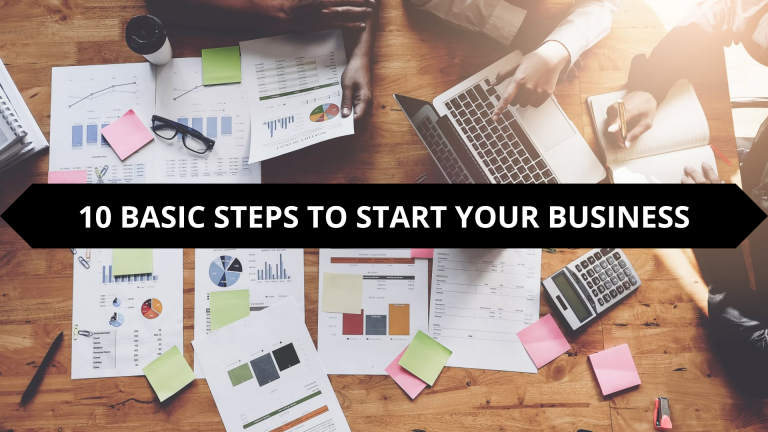On-Page SEO Best Practices: Tips for Optimizing Your Website Content
In the ever-evolving digital marketing landscape, on-page SEO (Search Engine Optimization) remains paramount to a successful online presence. On-page SEO guides to the strategies and techniques used to optimize individual web pages to enhance their search engine rankings and attract more organic traffic. When executed effectively, on-page SEO can significantly enhance the visibility and performance of your website. We will delve into the best practices for on-page SEO, furnishing valuable tips for optimizing your website content. Many digital agencies opt to partner with an SEO company white label to expand their service offerings and provide their clients with comprehensive SEO solutions while maintaining their branding and identity.
Understanding On-Page SEO
Before diving into the best practices, it’s paramount to comprehend what on-page SEO encompasses. On-page SEO involves optimizing diverse elements on a web page to make it more appealing to search engines like Google. These elements enclose content, meta tags, HTML tags, images, and more. The primary goal of on-page SEO is to create web pages that provide valuable and relevant information to users while being easily understandable by search engine algorithms.
- Quality Content is King
When it comes to on-page SEO, high-quality content reigns supreme. Search engines, especially Google, prioritize informative, relevant, and valuable content to users. Content should be well-written, engaging, and free of grammatical errors. It should also answer users’ queries and address their needs effectively. Keyword research plays a vital role in creating quality content. Before writing, research relevant keywords related to your topic using tools like Google Keyword Planner. Incorporate these keywords naturally throughout your content, including in headings, subheadings, and body text. However, avoid keyword stuffing, as this can harm your rankings. Instead, focus on providing meaningful and valuable content that resonates with your audience.
- Optimize Meta Tags
Meta tags are HTML elements that provide information about a web page to search engines and users. Two essential meta tags for on-page SEO are the title and meta descriptions. The title tag appears as the clickable headline in search engine results and is paramount for attracting user attention. It should be concise, descriptive, and contain your primary keyword. Keep it under 60 characters to ensure it displays correctly in search results. The meta description is a summary of the web page’s content. It should also contain relevant keywords and provide a compelling reason for users to click on your link. Keeping the meta description under 160 characters ensures it is fully displayed in search results.
- Create SEO-Friendly URLs
URLs play a role in on-page SEO and user experience. A well-structured and descriptive URL helps search engines understand the page’s content and makes it easier for users to navigate your site. Ideally, your URL should include the primary keyword and accurately represent the page’s content. Use hyphens to separate words, avoid special characters, and keep URLs concise and clean. For example, if your page is about “best hiking boots for beginners,” the URL could be “yourwebsite.com/best-hiking-boots-for-beginners.”
- Header Tags for Structure
Header tags (H1, H2, H3, etc.) create a hierarchy and structure within your content. They help both users and search engines comprehend the organization of your page. The H1 tag represents the page’s main heading and should include your primary keyword. Subsequent header tags (H2, H3, etc.) are used for subheadings and should be used to break up content into logical sections. Incorporate relevant keywords into these subheadings to furnish further context and improve search engine optimization.
- Optimize Images
Images can enhance the visual appeal of your content and engage users. However, they also need optimization for on-page SEO. When adding images to your web pages, follow these best practices:
- Use Descriptive File Names: Rename image files to something descriptive and include relevant keywords. For example, “hiking-boots.jpg” is more helpful than “img123.jpg.”
- Alt Text: Provide alt text for every image. Alt text briefly describes the image’s content and serves as an accessibility feature for users with disabilities. Including keywords in alt text can improve SEO.
- Image Size and Compression: Large images can slow down your website, affecting user experience and SEO. Compress images and use the appropriate dimensions to ensure faster page loading times.
- Image Sitemaps: Submit an image sitemap to Google Search Console to help search engines index your images.
- Internal and External Linking
Effective linking is essential for on-page SEO. Internal and external links contribute to the overall user experience and can positively impact your rankings. Internal linking involves linking to other pages within your website. It helps distribute page authority, keeps users engaged, and allows search engines to crawl and index your site more effectively. When creating internal links, use descriptive anchor text that provides context about the linked page. Conversely, external linking involves linking to reputable external sources that provide additional value or information related to your content. This practice can enhance your credibility and user experience. However, ensure that the external sources you link to are reliable and authoritative.
- Mobile-Friendly Design
With the increasing use of mobile devices for internet browsing, having a mobile-friendly design is crucial for on-page SEO. Google prioritizes mobile-responsive websites in its search rankings, and non-mobile-friendly sites may be penalized. Ensure that your website design is responsive and adapts to various screen sizes and devices. Test your site on smartphones and tablets to ensure a smooth and user-friendly experience for mobile users.
- Page Speed Optimization
Page speed is a paramount factor in both user experience and SEO. Slow-loading pages can usher to higher bounce rates and lower rankings in search results. To optimize page speed:
- Compress images and use efficient formats.
- Minimize HTTP requests by reducing the number of scripts and stylesheets.
- Use browser caching to store frequently accessed resources.
- Enable GZIP compression to reduce file sizes.
- Choose a reliable hosting provider with fast server response times.
- Schema Markup
Schema markup, also known as structured data, provides additional context to search engines about the content on your page. It helps search engines understand the type of information you’re presenting, allowing them to display rich snippets in search results. By implementing schema markup for your content, you can enhance your visibility in search results and provide users with more informative snippets. Common schema markup types include product reviews, recipes, events, and local business information.
- Regularly Update and Refresh Content
Search engines favor websites that regularly update their content. Stale or outdated content can usher in a decline in rankings. To maintain your on-page SEO efforts, periodically review and refresh your content. Update statistics, revise outdated information, and ensure your content remains relevant to your target audience. Consider repurposing and optimizing older content to align with current SEO best practices.
- User Experience and Core Web Vitals
User experience is a significant factor in on-page SEO, and Google’s Core Web Vitals have become a crucial metric for assessing it. Core Web Vitals measure aspects of web page performance, such as loading speed, interactivity, and visual stability.
To improve user experience and meet Core Web Vitals standards:
- Optimize page loading times.
- Ensure that interactive elements respond quickly to user input.
- Prevent layout shifts and visual instability that can disrupt user interactions.
- Focusing on these aspects benefits your on-page SEO and enhances overall user satisfaction.
On-page SEO is a multifaceted discipline that implicates optimizing various elements of your web pages to improve search engine rankings and enhance user experience. By following the best practices outlined in this guide, you can assemble content that is not only appealing to search engines but also valuable to your audience. Remember that on-page SEO is an ongoing process, and staying up-to-date with the latest trends and algorithm changes is paramount to maintaining and enhancing your website’s performance in search results. With dedication and a commitment to optimization, your website can achieve higher visibility, attract more organic traffic, and ultimately achieve your online goals.







